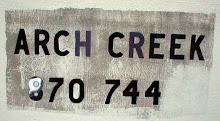From The New York Times here.
TWO burning questions are at the center of America’s health care debate. First, should employers be required to pay for their employees’ health insurance? And second, should there be a “public option” that competes with private insurance?
Answers might be found in San Francisco, where ambitious health care legislation went into effect early last year. San Francisco and Massachusetts now offer the only near-universal health care programs in the United States.
The early results are in. Today, almost all residents in the city have affordable access to a comprehensive health care delivery system through the Healthy San Francisco program. Covered services include the use of a so-called “medical home” that coordinates care at approved clinics and hospitals within San Francisco, with both public and private facilities. Although not formally insurance, the program is tantamount to a public option of comprehensive health insurance, with the caveat that services are covered only in the city of San Francisco. Enrollees with incomes under 300 percent of the federal poverty level have heavily subsidized access, and those with higher incomes may buy into the public program at rates substantially lower than what they would pay for an individual policy in the private-insurance market.
To pay for this, San Francisco put into effect an employer-health-spending requirement, akin to the “pay or play” employer insurance mandates being considered in Congress. Businesses with 100 or more employees must spend $1.85 an hour toward health care for each employee. Businesses with 20 to 99 employees pay $1.23 an hour, and businesses with 19 or fewer employees are exempt. These are much higher spending levels than mandated in Massachusetts, and more stringent than any of the plans currently under consideration in Congress. Businesses can meet the requirement by paying for private insurance, by paying into medical-reimbursement accounts or by paying into the city’s Healthy San Francisco public option.
There has been great demand for this plan. Thus far, around 45,000 adults have enrolled, compared to an estimated 60,000 who were previously uninsured. Among covered businesses, roughly 20 percent have chosen to use the city’s public option for at least some of their employees. But interestingly, in a recent survey of the city’s businesses, very few (less than 5 percent) of the employers who chose the public option are thinking about dropping existing (private market) insurance coverage. The public option has been used largely to cover previously uninsured workers and to supplement private-coverage options. . . .
So how have employers adjusted to the higher costs, if not by cutting jobs? More than 25 percent of restaurants, for example, have instituted a “surcharge” — about 4 percent of the bill for most establishments — to pay for the additional costs. Local service businesses can add this surcharge (or raise prices) without risking their competitive position, since their competitors will be required to take similar measures. Furthermore, some of the costs may be passed on to employees in the form of smaller pay raises, which could help ward off the possibility of job losses. Over the longer term, if more widespread coverage allows people to choose jobs based on their skills and not out of fear of losing health insurance from one specific employer, increased productivity will help pay for some of the costs of the mandate. . . .
I think it's great they got waiters covered. They're usually always screwed when it comes to healthcare and other benefits.

No comments:
Post a Comment